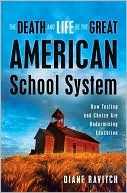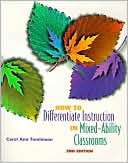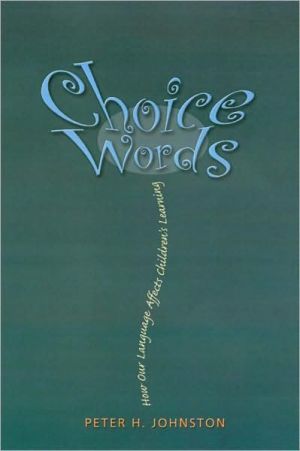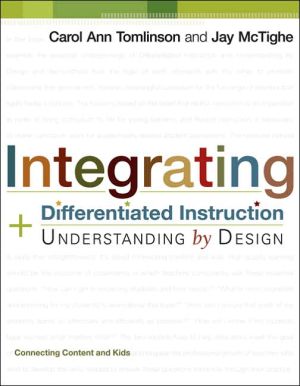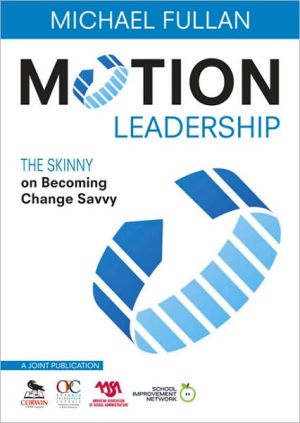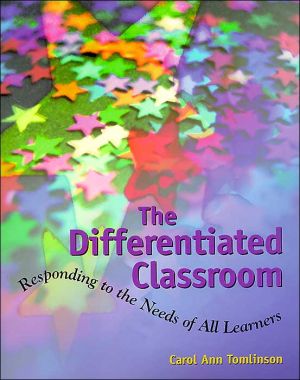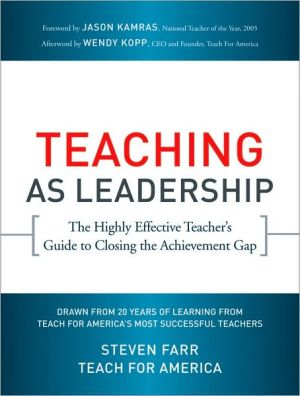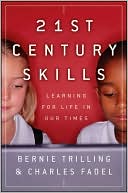Differentiation for the Adolescent Learner: Accommodating Brain Development, Language, Literacy and Special Needs
Activate learning in all adolescents—including ELLs and advanced learners—with these practical, developmentally appropriate techniques based on brain research, technology, and a six-point differentiation model.
Search in google:
Activate learning in all adolescents-including ELLs and advanced learners-with these practical, developmentally appropriate techniques based on brain research, technology, and a six-point differentiation model.
Foreword by David H. ReillyAcknowledgmentsAbout the AuthorIntroduction and Overview1. Differentiation and the Learning Brain It's All About Good Teaching Practice The Learning Brain Universal Design for Learning (UDL) UDL in Practice Cognitive Access for Learning Evolving Conversations About Differentiation Developmentally Responsive Differentiation The Language of Differentiation Content Differentiation Classroom Application Process Differentiation Implications for Practice Product Differentiation Powerful Learning Experiences Differentiation Design Principles Summary and Looking Ahead2. Differentiation and Adolescent Development Adolescent Development Adolescents as Learners Personal Connection Supporting Brain-Based Research Implications for Practice Emotional Engagement Supporting Brain-Based Research Implications for Practice Appropriate Intellectual Challenge Supporting Brain-Based Research Implications for Practice Purposeful Social Interaction Supporting Brain-Based Research Implications for Practice Metacognitive Development Supporting Brain-Based Research Implications for Practice A Supportive Learning Environment Supporting Brain-Based Research Implications for Practice A Prime Time for Learning Scanned Exuberance Neural Sculpting Crazy by Design A Physically Responsive Entity Brain-Compatible Instruction: A Summary Summary and Looking Ahead3. Adolescent-Centered Differentiation: Evaluation, Expectation, Engagement, and Exploration Start With the StudentsDifferentiation in Practice A Curriculum of Consequence Respectful Tasks A Differentiation Example Getting and Keeping Their Attention A Differentiation Example Unit Menus Flexible Opportunities for Interaction Differentiation Through Literature Circles Literature Circles in Action High School Examples of Literature Circles Other Differentiation Applications Summary and Looking Ahead4. Metacognitive Extension in Adolescent-Centered Differentiation The Power of Adolescent Metacognition Cognitive Modeling Metacognitive Coaching Guided Metacognitive Inquiry Teaching for Transfer The Metacognitive Power of Problem-Based Learning Differentiation in PBL: Two Examples Differentiation by Universal Design for Learning (UDL) PBLs and Adolescnet-Centered Differentiation The Malaria Mission Guided Metacognitive Inquiry Other Available Scaffolding Tools for Metacognitive Inquiry The Alhambra Restoration Guided Metacognitive Inquiry Summary and Looking Ahead5. A Differentiated Learning Environment: The Affective, Social-Emotional, and Physical Dimensions Invitations to Learn A Safe Learning Environment Creating a Community of Learners The Social Dimension of the Learning Environment Flexible Social Grouping Jigsaw as a Differentiation Strategy A Differentiation Example of Jigsaw Individual Accountability Study Groups for Engaging Older Adolescents Varying the Physical Environment The Organization of Time Other Physical Considerations Managing the Differentiated Learning Environment Summary and Looking Ahead6. The Intellectual Dimension in the Differentiated Environment The Intellectual Dimension of the Learning Environment Low to High Sequencing High to Low to High The Role of Assessment Meaningful Assessment and Differentiation A Differentiation Application Grading in the Differentiated Classroom Interaction in the Differentiated Learning Environment The New Geography of Learning Web-Based Learning Environments Technology and Cognitive Engagement Technology and Diverse Learners Technology to Scaffold Adolescent Learning Summary and Looking Ahead7. Learning Patterns and Profiles Patterns of Responsive Teaching Determining Student Variance Building on Learning Strengths Clusters of Commonality Cluster 1: Gifted or Advanced Learners Differentiation and Gifted Learners Implications for the Mixed-Ability Classroom Curriculum Compacting Tiered Assignments Learning Contracts Learning Centers Cluster 2: English Language Learners (ELL) Stages of Second Language Acquisition A Basis for Differentiation for English Language Learners Differentiated "Instruction That Works" A Differentiation Strategy for English Language Learners Cluster Group 3: Students With Learning Challenges Unflagging Expectations Learning Motivation and Personal Efficacy Critical Literacy Scaffolding for Success Gradual Release of Responsibility A Differentiation Example for Students With Learning Challenges Summary and Looking Ahead Epilogue: A Shared Commitment to Equity Project-Based Learning A Differentiation Example: The Oral History Project Resources for Oral History Projects Other Examples of Project-Based Learning In ConclusionGlossary of Adolescent-Centered Differentiation TerminologyReferencesIndex
\ Patricia Long Tucker"Provides research-based strategies that are easy to understand and implement."\ \ \ \ \ Cynthia Grindy"An important contributionfor teachers serious about helping adolescents learn. The book provides tools for a deliberate approach to focus on student learning."\ \ \ Maria Timmons Flores"Presents a broad and coherent framework that builds connections across theories of adolescent learning and development. The curriculum ideas, questions that prompt teachers’ self-reflection, and guidance for curriculum development all offer tangible tools to teacher educators and leaders in professional development efforts."\ \ \ \ \ Mark A. Springer"There is something for everyone here.A valuable resource for experienced teachers starting on the road to curriculum integration or switching to teaching adolescents. Preservice teachers would also benefit, because the book emphasizes the nature of the learner."\ \ \ \ \ David H. Reilly"Crawford admirably succeeds at addressingperhaps the most demanding of all adolescent educational endeavors: the daily challenge in educating and preparing adolescents' minds and talents for continued future growth. This is a must-read book for teachers and an excellent guide for parents."\ \ \ \ \ Michele Woodson"The implications of this type of learning environment for the middle school student are profound. My students will be excited to be a part of such a classroom!"\ \ \ \ \ Tina Mashburn"Provides teachers with practical approaches to integrate and implement research-based instructional practices that focus on individual student needs."\ \ \ \ \ Judith Howard"Crawford has done a remarkable job of bringing together cutting edge ideas on the differentiation of curriculum and instruction. Her six Es give readers a framework for thinking about the essential aspects of differentiation while her overarching goal of empowering students to manage their own learning provides a vital thread throughout."\ \ \ \ \ Melaine Rickard"Crawford's book is one that middle grades teachers can truly use. This is the kind of reference that becomes well worn, dog-eared, and written in, not dusty and hidden on a bookshelf."\ \

